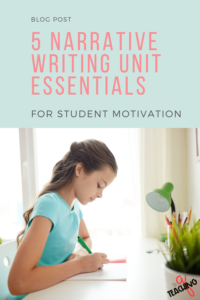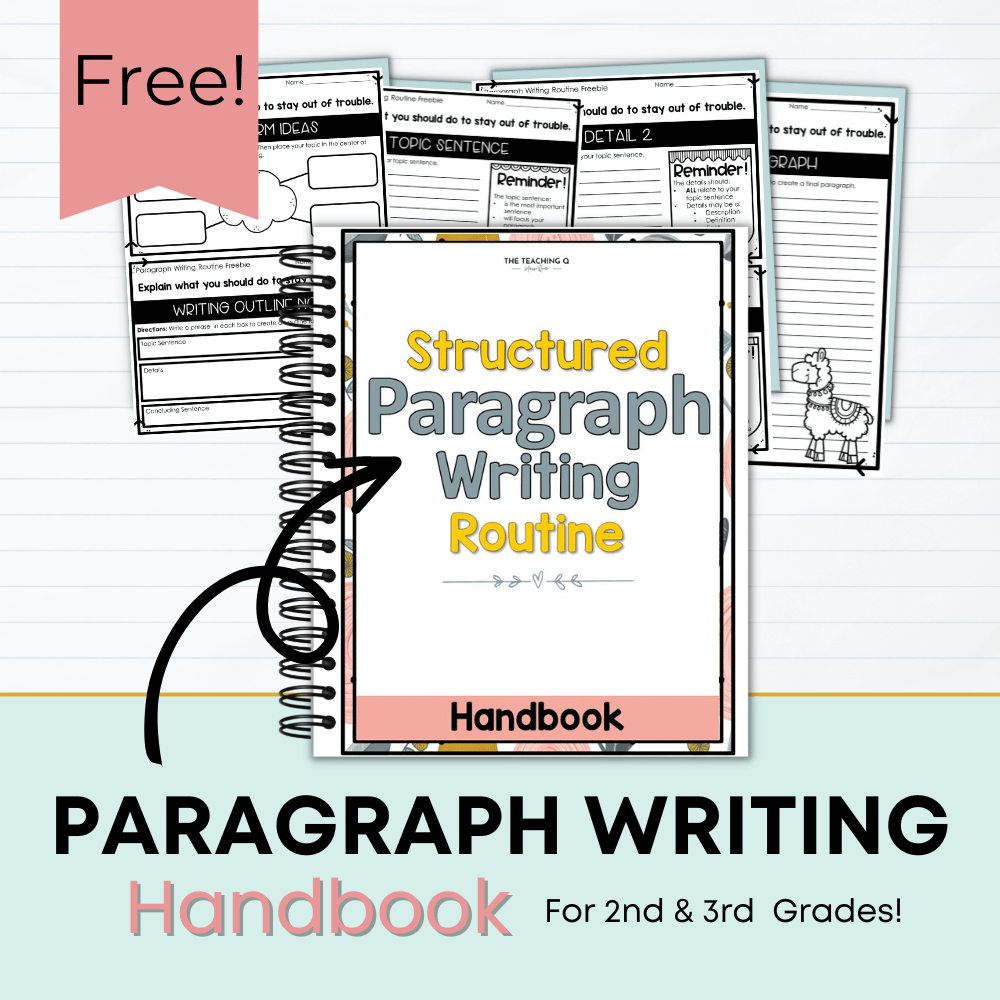Narrative writing units can be fun and exciting for young children (in the beginning). The students start giddy and chatty about their fictional characters and have fun with the plot. But too often, the excitement dies down by day two or three.
For this reason, I take advantage of my student’s day-one excitement and keep the hype going. By the time students publish their narratives, they’re even more excited than on day one! (Now, that’s a true teacher win!👏👏👏)
Here’s my little secret. I include five essential must-haves in every narrative writing unit. The essentials keep students motivated and eager to write throughout the writing process to completion.
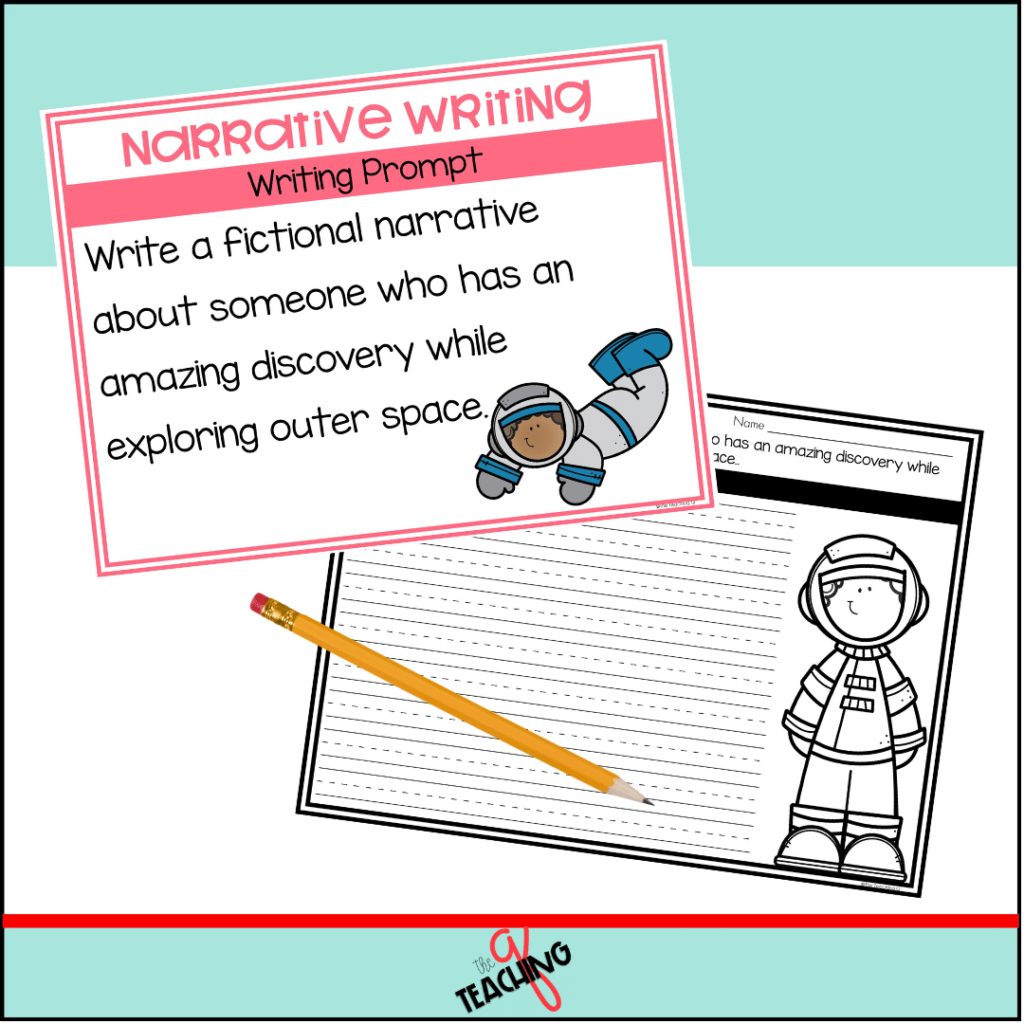
Strong Narrative Writing Units Prompt
Your narrative prompt can make or break you.
First, ensure students will buy into the assignment and include a writing prompt using their imagination.
Any prompt with a make-believe character and a unique setting will be a big hit!
Secondly, ensure the prompt lends itself nicely to a problem/solutions structure. Since fictional narrative writing requires a sequence of events, you will want to make the writing structure flow easily for the students.
Some favorite Prompts are:
- Write a fictional narrative about a pirate searching for a treasure.
- Imagine and write a fictional story about someone with a fantastic discovery while exploring outer space.
- Write a fictional narrative about a wounded baby animal without its mother.
Narrative Writing Units with Visuals
Visuals are a crucial component of any form of writing. Students can deepen their thinking by allowing students to look at photographs, clipart, or even simple drawings.
Just think about how popular Instagram has become. Yes, it’s because Instagram is a visual platform. No matter the age, we all cling to visuals.
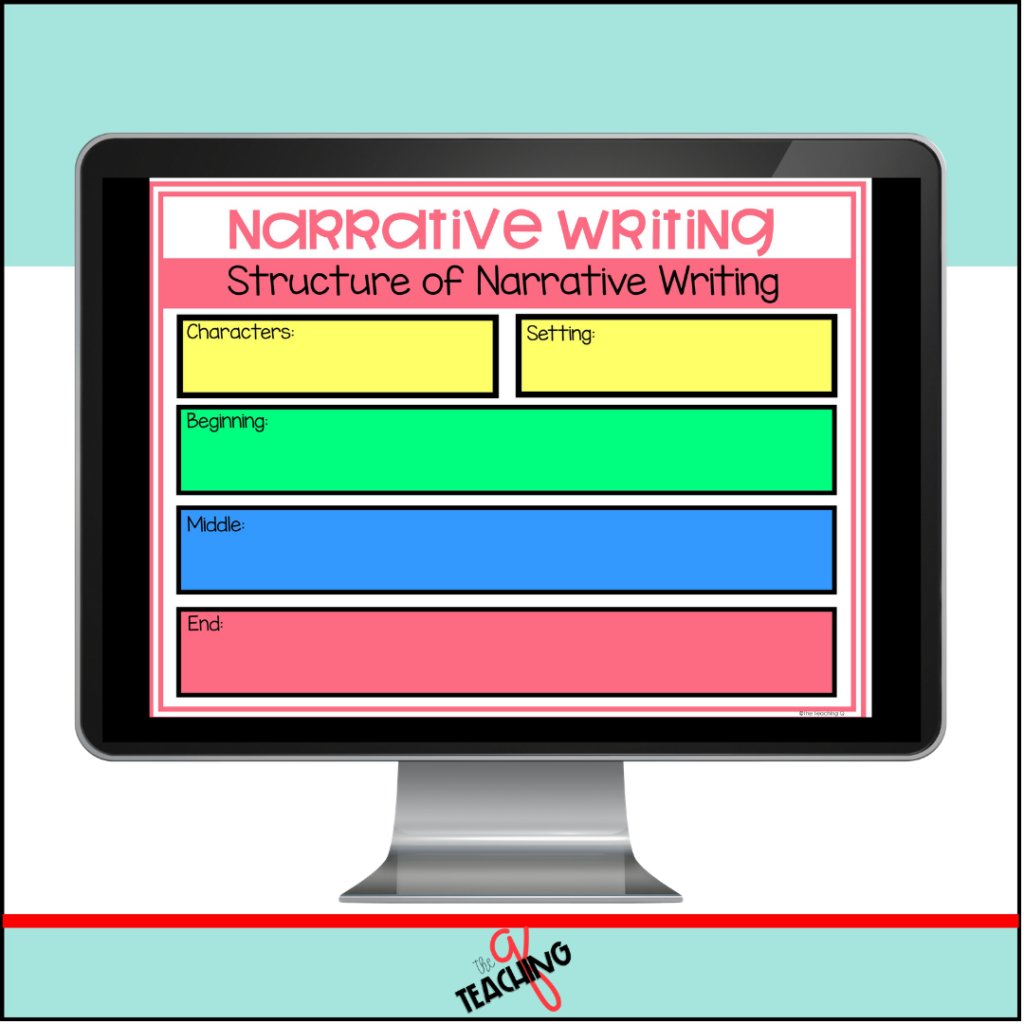
The Narrative Writing Graphic Organizer
Now that you have a robust fictional narrative prompt, you’ll need students to express their many thoughts in an organized fashion. A clear and simple graphic organizer is essential to support students with their thought processes.
Your organizer should include the components of narrative writing.
- Character
- Setter
- Plot
- Beginning/Problem
- Middle
- End/Solution
Encouraging students to share their ideas is highly suggested. Students feed upon one another, which in return, strengthens their narrative writing.
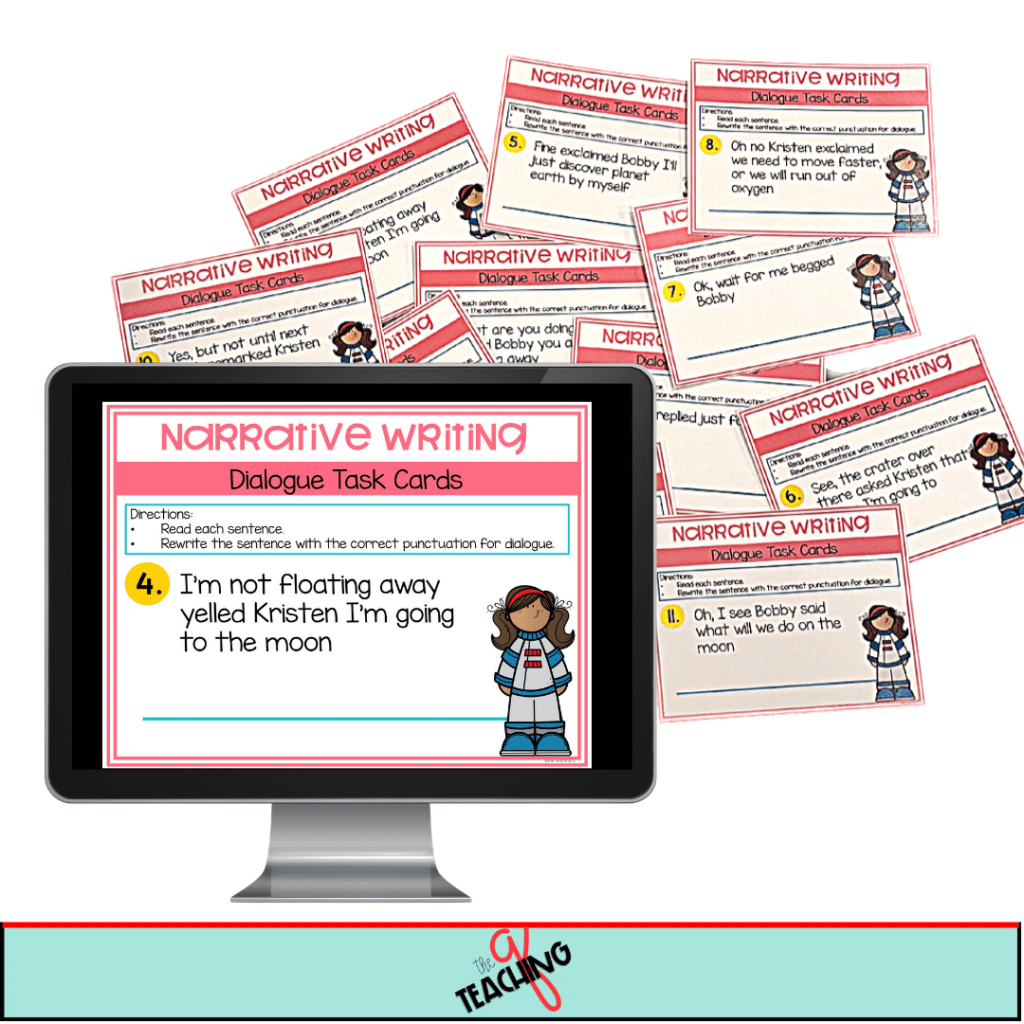
Engaging Mini-Lessons
Writing a narrative is an enormous task for any student. For this reason, it is essential to break up the writing process with engaging mini-lessons. Two skills needed for narrative writing are teaching:
- dialogue
- descriptive details
A mini-lesson explaining each will enhance their writing, but hands-on practice will solidify the skill. I love to use task cards (digital or print) when planning student practice opportunities. But there are many other options too, such as; a worksheet or a “Can you find _____?” Activity.
If you’d like to read more about student engagement, I have this blog post that may interest you.
Narrative Writing Publishing Options
Publishing a fictional narrative can often be overwhelming. For this reason, I like to assign each step of the writing in google docs each day. A small chunk completed daily seems more doable to young children. On the final day, students copy each day’s mini-writing assignment and paste them into the last publishing page.
I can do the same on paper if I’m not using a digital format. Each day the students add a small chunk of the step-by-step narrative broken down. By the last day, students are amazed at how much writing they have completed.
The final step is to make minor adjustments to their illustrations to ensure it matches the completed narrative.
If you’re interested in this process already set up with all five essentials included, you can grab them in my TPT shop here.
Do you have an essential writing component you require? If so, please share. I’d love to hear your thoughts.

Are your students struggling and making very little progress in writing? Or maybe they’re unmotivated or a reluctant writer? If so, I’ve got your back.
Yes…I…Do!
Let me share my secret sauce when teaching writing to elementary students.
It’s the Sentences, Paragraphs, and Essays: OH, MY! E-book.
Click this link to learn how the E-Book can transform your students’ chicken scratch, hap-hazard writing into strong, effective, glorious writing!
Melissa
